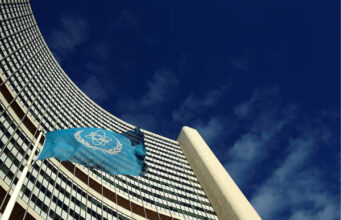
How is the Indian Air Force dealing with the two-front China and Pakistan threat in Ladakh? “The way to deal with these two fronts is by better tactics, by better deployments”, Air Commodore D.S. Handa, Air Officer Commanding (AoC), Air Force Station (AFS) Leh says. In this exclusive interview, in front of a Mig-29, at the AFS, to StratNews Global’s Amitabh P. Revi, he adds, “In this mountainous terrain, we have to know what are the avenues of approach that the enemy can take, what are those critical locations where we can deploy our radars, where we can deploy our assets, where we can deploy our surface to air guided weapons systems (SAGW). So that if there is any threat in future, we can first of all pick them up in time and then respond to them in time. And rest assured they are deployed at these locations”.
Watch this interview in our series ‘The Himalayan Frontier’ Part VI . First, we shift from covering the crucial land connectivity projects the Border Roads Organisation (BRO) is involved in. Second we look at how the Indian Air Force’s women, men and machines are honing their all-weather readiness during another winter, against the two-front threat from China and Pakistan.
StratNews Global’s team of Amitabh P. Revi, Rohit Pandita and Karan Marwaha travels during the fourth winter of India’s forward deployment post Xi Jinping’s aggression that led to the deadly Galwan clashes in 2020.
“What happened post the Galwan crisis, a lot of modern assets got deployed at this base”, Air Commodore Handa tells us, “Not only fighter assets, which are nowadays on 24×7 operational readiness platforms, but also modern radars as well as surface to air guided weapons have been deployed in a layered defence zone”. The AoC explains “Before Galwan, we were actually blind in this Area of Responsibility (AoR). Post Galwan all these modern assets got deployed at this base as well as some critical forward locations, wherein we could keep a close eye on the enemy throughout”.
Watch this interview for more on the challenges the Indian Air Force has to deal with, the lifeline it is for the Siachen Glacier deployment, the strategic importance of the Thoise Air Base, the strategic significance of the Nyoma Advanced landing Ground (ALG), the AoC’s thoughts on Agniveer induction, the role of women, jointness with the Army and other forces and civil-military relations.
SNG’s team documented their journey to Leh on the strategic third, alternate axis—the Darcha-Padam-Nimu (NPD) Road, in episode III and episode IV. The route provides critical connectivity for defence logistics to and civilian development around the Northern China-occupied Tibet border or Line of Actual Control (LAC), the Line of Control (LoC) and the Actual Ground Position Line (AGPL) in Siachen with Pakistan. It is shielded from both the India-China border and the frontier with Pakistan unlike the other two axes.
In part II of this series, the Indian Army Chief, General Manoj Pande told StratNews Global Editor-in-Chief Nitin A. Gokhale in an exclusive interview, that talks with China are continuing at both military and diplomatic levels but India is maintaining a robust posture along the LAC. The then Northern Army Commander, now appointed Vice Chief of Army Staff, Lt Gen. Upendra Dwivedi also spoke to Nitin Gokhale in Part I. He points out that the “situation is stable but sensitive and not normal”.
In episode V, Lt Gen Raghu Srinivasan, the DG, BRO talks to us on the frozen Zanskar River Chadar Trail. This conversation took place at Chiling near Leh in Ladakh. He noted, “the impetus over the last 5-6 years has been a surge in what we are planning and are doing in Ladakh”. The amount of projects being planned, funding provided, the way that projects are being cleared, all of it is phenomenal. We have not seen anything like it”.















